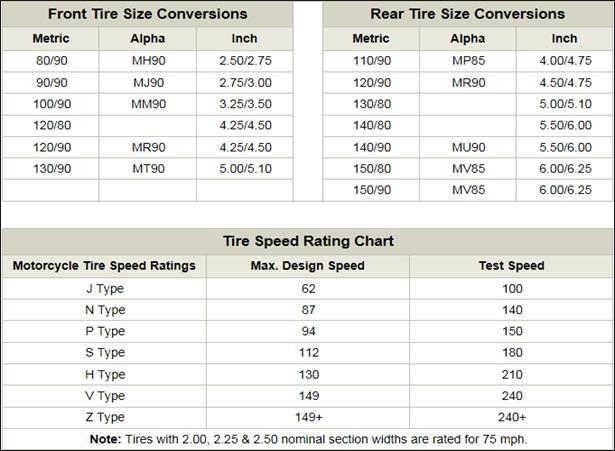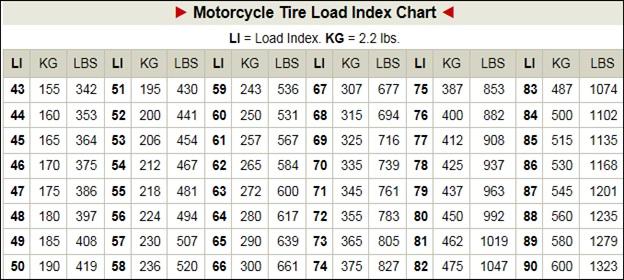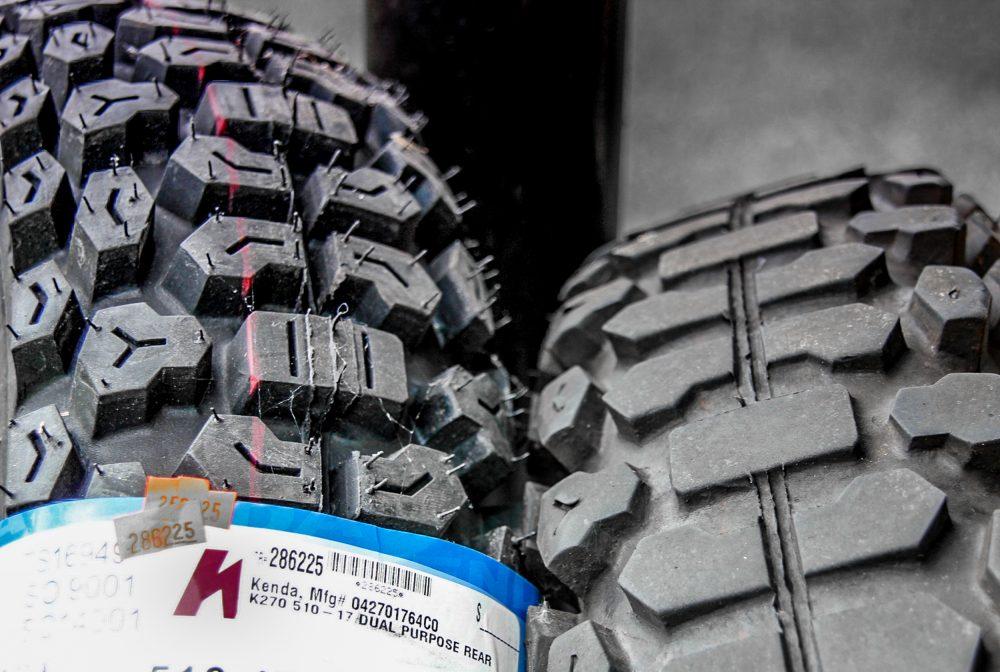
All You Need To Know About Tires
BY PAUL STEWART
Read any magazine, blog, or forum, and you will find dozens of articles, posts, and discussions on tire choices. Along with the same debates about oil, they always seem to take a similar direction: personal opinions of what is best. Reliable, practical information can sometimes get lost in such discussions, so let’s concentrate on what could actually be useful instead.
You have a motorcycle; it has tires on already, and they are a consumable item that will need replacing sometime in the future, agreed? If you are traveling in your country, then chances are you will just get the same tire brand and model you already have if you are happy with their performance and longevity.
But what if you travel internationally? Did you know that different countries use different markings, different size references and a different way of showing load rating?
This is important stuff if you find yourself in the middle of Mongolia, Thailand or Bolivia and you do not speak the local language, or you have no internet connection to do a quick research: you need to know what you are looking at!
Before you set out on a long overland journey, do your due diligence and make a note of the information you need. Write it down somewhere in a permanent pen; inside of a pannier lid is an example I have used in the past (smartphone memos are great, but what if there is nowhere to charge it and your battery is dead?).
So, what do you need to know?
The Size of Your Rims
This is the most important factor because it will determine your tire size. Most rims have this information stamped on check to see if you can find it. It should show something along the lines of 21×1.60 or 18×2.15.
Speed and Load
Speed and load ratings are very important numbers and letters to watch out for. Mopeds and scooters in third world countries may have the same size wheels as your KLR or F800, but at the same time, they may have a maximum speed of 45mph – so a tire rated for 60mph is good for them. You, on the other hand, will probably exceed that speed before you reach the first bend after the tire shop. Same goes for load ratings: that scooter weighs 200lbs, while your F800 weighs over 600lbs loaded with gear. This could have dire consequences, do not gamble on the wrong tire to save a few dollars, euros or Mongolian tögrög.
If you aren’t sure what exactly you might need, have a look at
www.motorcyclespecs.co.za. It has a listing for almost every modern motorcycle ever made. Tire recommendations on this website include the optimum tire size for your bike determined by the manufacturer; cross reference that with the rim and tire size data on the chart below, make a note of what you can use on the front and the rear, and you’re good to go.
Tube Choices
If you are running inner tubes, similar principal applies – you need the right inner tube according to the size of wheel and tire. Why? If you put an 18×120 inner tube in a wheel that uses an 18×140 tire, it will fit, but it will have to be pumped up past its optimum size to fill the tire carcass thus making the thickness of the inner tube thinner, which will make it significantly more prone to punctures.
Inner tubes come in an array of thicknesses. Thicker tubes (up to 4mm) are recommended for more off-road use, to withstand punctures better, and pinch flats. The trouble is, thick tubes are tough to carry as spares because of their size. In addition, fixing an extra thick tube on the trail side is not always as easy as fixing it in the comfort of your campground or hotel.
A good rule of thumb is to use them if you plan a hard off – road ride, but carry a regular thickness spare tube for a quick change if you get a flat – this way, you can fix the thick tube at a later time.
USEFUL CHARTS:
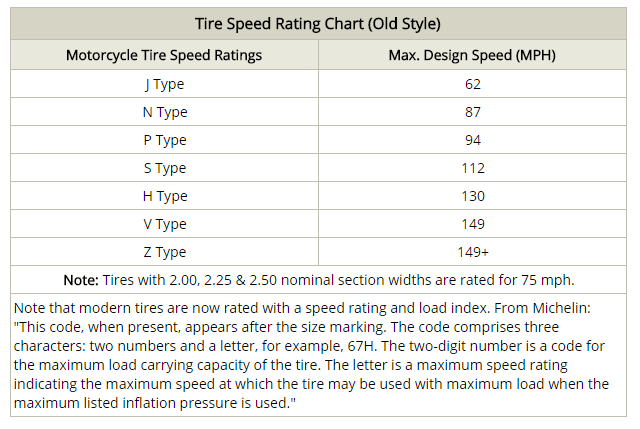
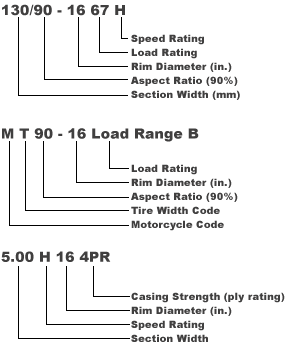
NOTE: ALWAYS use the exact tire size, type, speed and load rating recommended by the manufacturer of your motorcycle. Never try to second-guess the designers and engineers with regards to tire size, type, speed or load rating!

